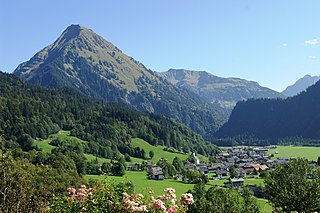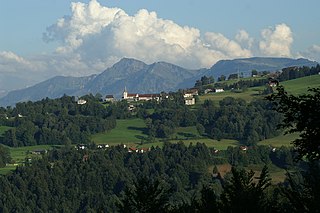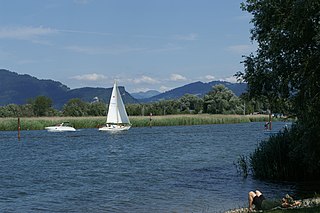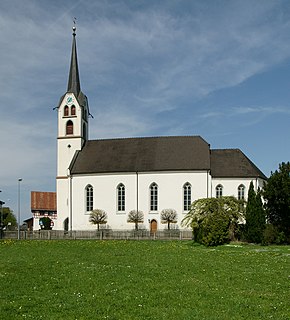This article may be expanded with text translated from the corresponding article in German. (April 2010)Click [show] for important translation instructions.
|
Bizau | |
|---|---|
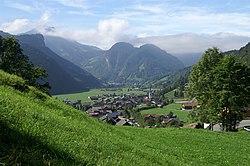 | |
 Location in the district | |
| Coordinates: 47°22′08″N09°55′24″E / 47.36889°N 9.92333°E Coordinates: 47°22′08″N09°55′24″E / 47.36889°N 9.92333°E | |
| Country | Austria |
| State | Vorarlberg |
| District | Bregenz |
| Government | |
| • Mayor | Josef Moosbrugger (ÖVP) |
| Area | |
| • Total | 21.08 km2 (8.14 sq mi) |
| Elevation | 681 m (2,234 ft) |
| Population (2018-01-01) [2] | |
| • Total | 1,107 |
| • Density | 53/km2 (140/sq mi) |
| Time zone | UTC+1 (CET) |
| • Summer (DST) | UTC+2 (CEST) |
| Postal code | 6874 |
| Area code | 05514 |
| Vehicle registration | B |
| Website | www.bizau.co.at |
Bizau is a town in the Bregenz Forest in the Austrian state of Vorarlberg, part of the district Bregenz. The municipality has around 1080 inhabitants.

The Bregenz Forest is one of the main regions in the state of Vorarlberg, Austria. It overlaps, but is not conterminous with, the Bregenz Forest Mountains which are a range of the Northern Limestone Alps, specifically the northern flysch zone. It is the drainage basin of the Bregenzer Ach river.

Austria, officially the Republic of Austria, is a country in Central Europe comprising nine federated states. Its capital, largest city and one of nine states is Vienna. Austria has an area of 83,879 km2 (32,386 sq mi), a population of nearly nine million people and a nominal GDP of $477 billion. It is bordered by the Czech Republic and Germany to the north, Hungary and Slovakia to the east, Slovenia and Italy to the south, and Switzerland and Liechtenstein to the west. The terrain is landlocked and highly mountainous, lying within the Alps; only 32% of the country is below 500 m (1,640 ft), and its highest point is 3,798 m (12,461 ft). The majority of the population speaks local Bavarian dialects as their native language, and German in its standard form is the country's official language. Other regional languages are Hungarian, Burgenland Croatian, and Slovene.

Vorarlberg is the westernmost federal state (Bundesland) of Austria. It has the second-smallest area after Vienna, and although it has the second-smallest population, it also has the second-highest population density. It borders three countries: Germany, Switzerland, and Liechtenstein. The only Austrian state that shares a border with Vorarlberg is Tyrol to the east.












